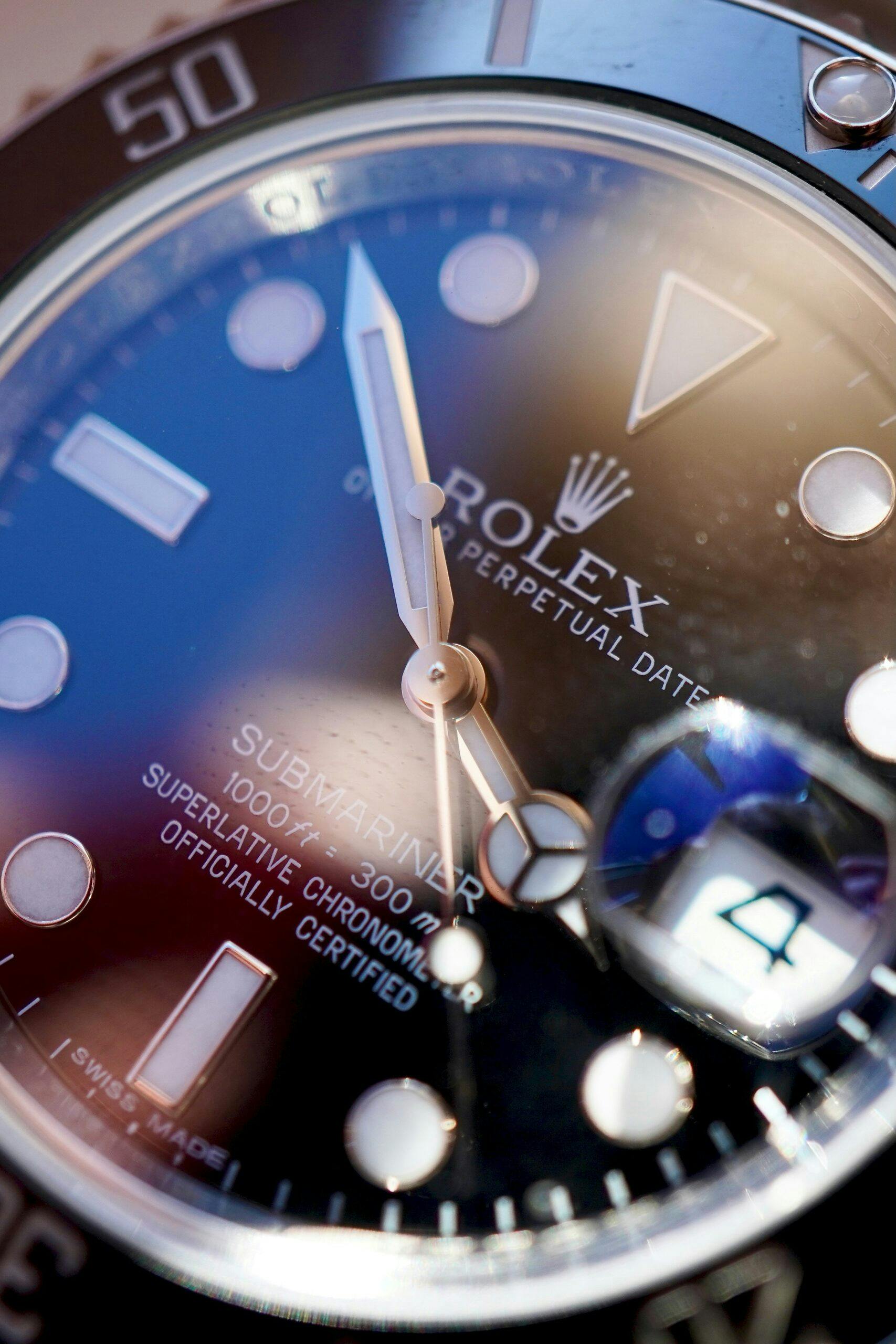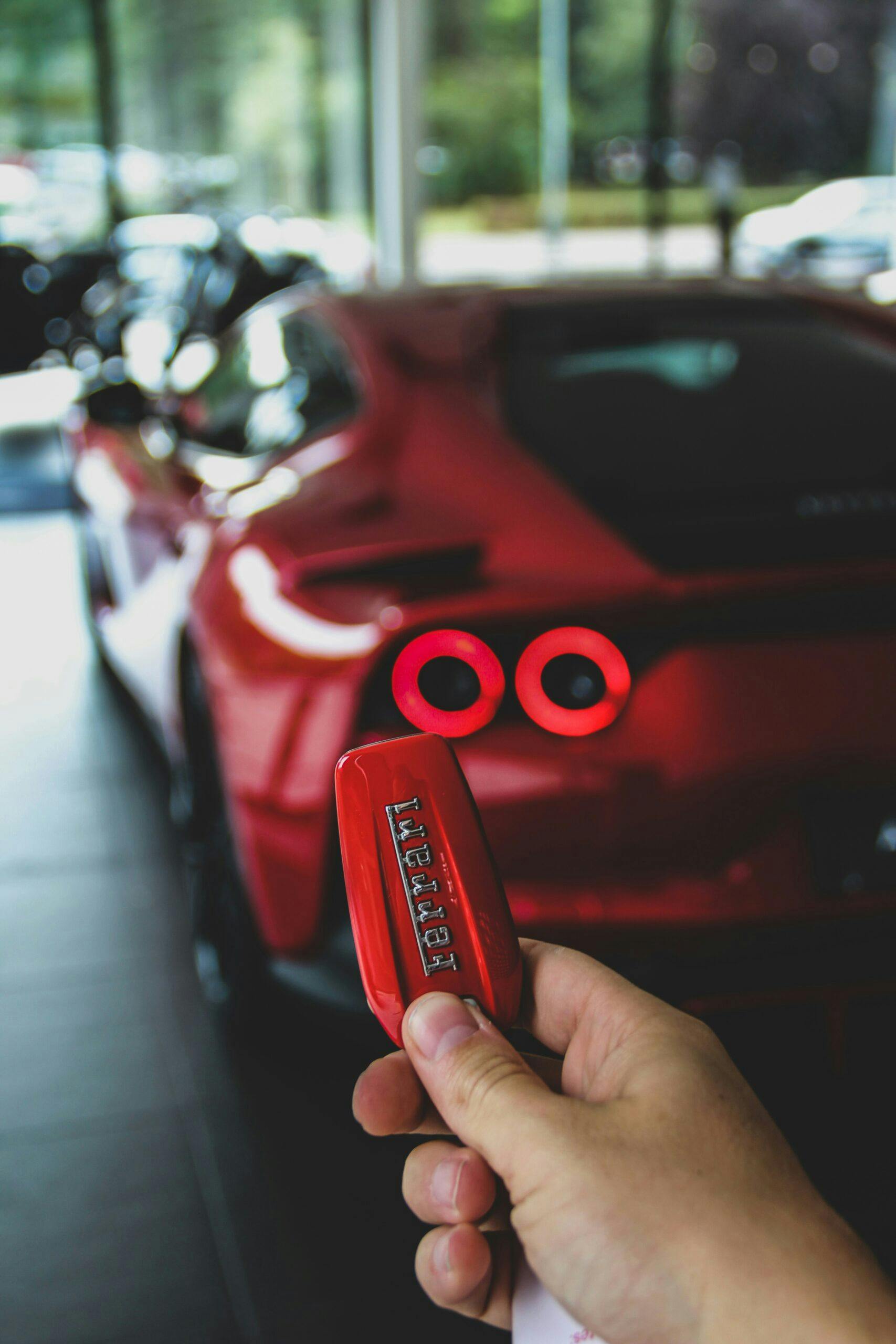Ferrari, Rolex, and the Risks of Gatekeeping
Ferrari and Rolex carry just about as much cachet as any brand can, and given their histories, it’s easy to understand why. But the two revered luxury brands have made some choices that have come back to haunt them, and will probably to continue do so. Let me explain.
For context, I own a Rolex and a Ferrari. (OK, Boomer, you’re fancy, we get it.) The Rolex I bought in 1981, and I wear it almost every day. I bought the Ferrari in 2017, a 2005 model. I use it like most “modern” Ferrari owners, which is to say, not much. I love these brands and the incredible machinery they’ve created over the years, but their gatekeeping strategies are becoming a turn-off, and I don’t think I’m the only one who feels that way.
Try buying a new Rolex watch. That lovely display at the authorized dealer is empty. Why? Because there are no new watches available in the system. They have been sold by authorized dealers to “favored customers,” almost all of whom are not end users but friends, influencers, celebrities, used watch dealers or flippers. There is nothing on the store shelves, but conveniently, a quick look at online, non-authorized retailers reveals a much different story. Fresh 2024 watches are for sale at a markup over their retail price. Who benefits? Rolex, their retailers, and a small group of connected individuals. The losers? The rest of the world who would like to buy a new Rolex at retail.
So what happens? Those rejected buyers buy something else or go without. The bitter feeling of being rejected by a brand might not resonate at first, but it lingers. That lingering feeling can cause resentment. And that resentment sends qualified buyers to other stores. Rolex, a Boomer “must-have,” has become a Gen X reject, a Millennial inside joke, and a Gen Z “I’m never going to afford a house, so I’ll rent one for my next Tik Tok” prop.


Is it just me, or am I the only one who thinks that paying the favored client, the brother of the watch retailer’s owner, or the flipper a $5,000 to $10,000 ransom (or 100 Timex watches at $100?) for what is a two-month-old but now “used” watch is the height of arrogance, or perhaps stupidity? Is Rolex leveraging its future in an era when hundreds of new watch brands and thousands of new watch models appear every year?
Rolex has a sister brand, Tudor, which is where they are now placing their innovative and lesser-priced timepieces. However, Tudor as a brand is less aspirational than Rolex. Rolex makes it perfectly clear that they are not the same as a Tudor, and Tudor reciprocates. But I must wonder, does the lack of a new Rolex drive buyers to other brands? I think it does. That Patek Phillipe, Blancpain, Chopard, IWC, or Audemars Piguet might have flown under the radar unnoticed if not for a potential owner leaving the Rolex store empty-handed.
On to Ferrari. It is one of the best-known of all brands not just in the U.S., but in the world. If you don’t have the means or access to a genuine Ferrari car, you can get genuine (or licensed) Ferrari hats, key chains, license plate frames, scale models, shirts, socks, jackets, posters, model cars, and hundreds more trinkets, and thousands more if you count the unlicensed rip-offs.

Just to be clear, you can walk into a Ferrari dealer and buy a new Ferrari, should you have the coin or credit. But there is a treasure trove of new Ferraris you can’t have, that is until you have worked your way up the sales ladder, or are a favored client, aka a popstar, an influencer, or a celebrity. Again, mere mortal’s money is not good enough, you have to buy car A, B, C and possibly D and E before you can get the coveted F, G, or H. Maybe I’m a luddite, but I just don’t get it. Call it brand management, or call it savvy marketing if you follow the company line. I don’t agree.
I’ll call it something else. This extreme “hide the good stuff” philosophy has—I believe—helped fuel the unprecedented growth of rival brand McLaren. That’s a good thing for the marketplace, as competition breeds innovation. McLaren Cars (Now McLaren Automotive) introduced its first production car in 1992—the now legendary F1. After an extended period of dormancy, they have more than hit the ground running with a plethora of new models since 2010.
Now, let’s talk Lamborghini. In my opinion, the Lamborghini brand is in ascendancy. They, like McLaren, are seemingly everywhere you find high-value sports cars, be it on track, on the street, or at cars and coffee or concours lawns.
Has Ferrari’s brand management helped create the opportunity for the growth of other brands? Is it just me, or have a good percentage of the car guy Cool Kids (particularly the younger ones) jumped from the Prancing Horse to the Snorting Bull or to McLaren?
I will concede that my observations are mostly, well, observational. I can tell you that on the Monterey peninsula in August, I saw groups of Lamborghinis and McLarens out in force on group drives. Ferrari? Some, but not as much. Perhaps the collectors are buying Ferraris while the drivers are getting McLarens and Lamborghinis.
Maybe I saying the quiet part out loud, or maybe I am off base. They were always exclusive brands, but based on what I see, I have to ask the question: Does the emerging hyper-exclusivity of Rolex and Ferrari, two great, storied, aspirational brands, mean that they have sold their future at the expense of the present?



Have you tried inquiring about purchasing a GT3 or GT4 at a Porsche dealership lately??? It will ‘cost’ you 3 Macans, 2 Panamera’s and a few Taycans just to be put on the list. Still more economical to pay the after market mark-up and support the factory supported black market.
No product is so wonderful I’d pay a bribe to own it. Rolex? Been there, done that. Owning one didn’t change my life. Never had a Ferrari, but I’ve had a Porche and a Corvette. Again, all they did was allow me to check those boxes on my bucket list. What’s on my wrist right now? A black plastic Casio, the ultimate anti status symbol.
Marketing 101 folks; if you sell all the product you can possibly make, you are doing well, full stop. Ferrari are not for those who wrench on their own cars, nor are Rolex. They both sell all they can make, hence Rolex building a new factory, so I don’t get the hate. If the marketing ain’t broke, no need to fix it. If you can’t get a new Rolex at the local store, boo hoo, go to Bob’s watches and pay market value. If you have to whine about the flippers and the markups, you can’t afford it anyway. Ferrari have built brand value by not allowing the nouveau riche nobodies acquire their higher tier cars. Also, kicking celebs off the choice list when they do stupid stuff or a tacky wrap, is smart.
Neither are my jam, I’m all about Porsches and Breitlings, but that’s just my taste.
And you poor saps happy to just look at your phone for the time are really missing the point – it’s like living in a sad old house with no art on the walls, just old wallpaper and faded pix of the grandkids. Ya’ll might as well drive a tired first-gen Prius.
You will, infallibly, end up the same pile of rot and maggots or ashes as the guy in a first Gen Prius. Sic transit Gloria mundi…
I think Ferrari and Rolex have each developed an exteme level of prestige, a very difficult thing to create deliberately, and by two different methods.
So there merit to what you suspected to be true. The VP of North American Ferrari, longinotti Buitoni, wrote a book called Selling Dreams. In the book, he provides details of how high end companies such as Ferrari and Rolex accomplish the craft of convincing people to spend large amounts of money on their product. In the book, he specifically talks about Rolex as having a generic mechanical core produced in quantity and packaging into something attractive. FYI, Rolex could not pass NASAs environmental tests to be used as a moon watch. That credit goes to Omega.
The book also describes tricks such as spraying artificial leather smells into the air ducts of the dealerships. The book is a tough read, but and talks about many high end companies and the tricks they use to convince the customer to buy their products. When done reading, my opinion of Ferrari and Rolex dropped considerably.
Indeed, an excellent book. Selling some flashy bauble or vehicle with an aire of “quality” or allure to people desperate to prove they’ve made it and are someone now has always been a solid marketing ploy. Just read through these comments…
It also trickles down. Do some people watching among the proles to see how many name brands are plastered all over people who probably went into debt for the privilege of being a walking billboard for the brands.
The funny thing is you have the same argument between Ferrari / Porsche, Rolex / Omega. Between the Submariner and Speedmaster it’s a tie. So where NASA chose Omega as the official “Moon Watch” it also has the distinction of being the watch that broke on the moon. Without going into too much detail. There were those who objected to using a Swiss watch for the missions. Bulova a, a then US manufacturer , produced a competitor. While Omega got the contract David Scott was gifted one. When his Speedmasters crystal popped off on the moons surface he went to his backup, the Bulova. Being that it was officially his property it then stayed with him . Sold for 1.3 million if I’m not mistaken. Today you can buy a Bulova Lunar for about 5-6oo hundred bucks. While lacking the others cachet, the same style. Its a very nice solid watch at a fraction of the price.
As a mechanical engineer, I believe I am better able than most people to appreciate the sophistication and craftsmanship that go into products from brands like Rolex and Ferrari, and I have the highest respect for them. From a practical standpoint, however, I find them to be stupendously overpriced, and I think anyone foolish enough to fall for their elitist marketing tactics deserves to be gouged. And no, that’s not jealousy, it’s just common sense. There are other products out there just as good or better in objective terms whose makers do not make you overpay or jump through hoops to purchase them. For me, there’s more satisfaction in getting the best value for my money than having fancy nameplates to impress others.